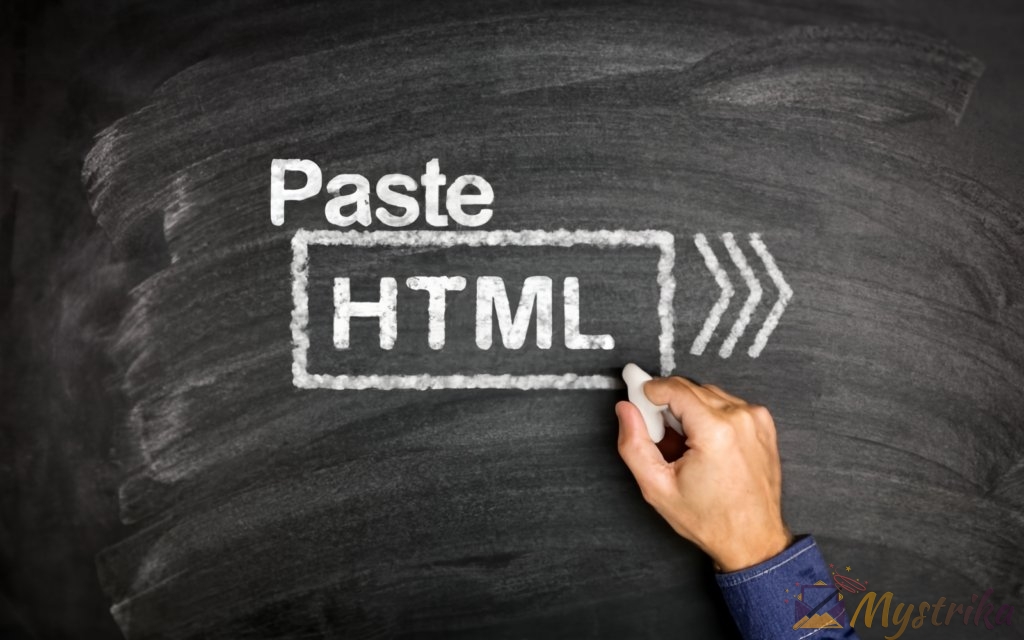Tired of endlessly hand-coding repetitive HTML for menus, formatting, emails, and more? Unlock massive time savings by mastering copy-paste techniques for HTML. This comprehensive guide covers all the ins and outs of working smarter with HTML using paste power-ups. You’ll learn how to rapidly insert code snippets, convert documents to HTML, clean up messy code, visually edit, securely collaborate, and more – all by leveraging the mighty copy and paste. Whether you’re spinning up new web projects, converting Word docs to HTML, building HTML email templates, or populating knowledge bases, this guide will upgrade your entire HTML workflow. Stop the grunt work and start working smarter with HTML!
Why Paste HTML Code?
Quickly add HTML snippets into webpages and apps
As a developer, you likely need to frequently add bits of HTML code into your webpages, apps, and other projects. Manually writing even simple HTML tags over and over again can become tedious. Pasting reusable code snippets allows you to work faster and smarter.
Here are some common examples where pasting HTML comes in handy:
- Adding a navigation bar, footer, or other repeatable components across multiple pages of a website. Just write it once and paste away!
- Inserting formatting like making text bold or italic with
<strong>and<em>tags. Why type those each time when you can paste? - Embedding media like YouTube videos by pasting the iframe embed code anywhere you want them to appear.
- Adding HTML tables to display data rather than manually writing out all the table tags.
- Implementing CSS styling by pasting in
<style>blocks. - Including SVG icons and graphics using
<svg>elements. - Adding forms for surveys, contact pages, etc by pasting the
<form>tags. - Creating buttons and links using
<a>anchor tags with the right HTML attributes. - Building slideshows and carousels by pasting in the required HTML and JavaScript.
- Populating content dynamically using HTML templates.
These are just a handful of examples – there are infinite ways pasting reusable code can help speed up your development process. While HTML5 and CSS frameworks like Bootstrap and libraries like React help minimize manual coding, you’ll still often need to paste HTML for layouts and UI elements.
The key is having a handy library of reusable snippets you can quickly access anytime. Here are some tips:
- Maintain your own personal library – Keep a Markdown doc, Google Doc, or other notes with your commonly used HTML chunks.
- Use online code snippet tools – Sites like CodePen allow you to save and organize reusable code bits.
- Integrate snippets into your IDE – Many code editors have snippet management built-in or available as plugins.
- Look for open source snippet repos – GitHub, StackOverflow and other communities share useful libraries.
With the ability to easily insert HTML code building blocks wherever you need them, you can focus on the bigger picture of your web project rather than repetitively coding HTML tags from scratch.
Convert documents like Word or Google Docs to HTML
Another prime use case for pasting HTML is converting content from Word documents, Google Docs, Excel spreadsheets, PDFs, and other formats to clean semantic HTML.
For example, say you have an existing Microsoft Word file containing:
- Headings styled with Word’s heading formats
- Bulleted and numbered lists
- Bold and italic text
- Images and tables
Rather than manually recreating all this content with HTML tags, you can simply copy and directly paste everything into an online HTML editor.
The editor does the heavy lifting to transform the pasted content into clean, valid HTML code. Here’s a glance at what happens:
- Word headings become proper heading tags like
<h1>,<h2>,<h3>. - Lists are converted to HTML list tags
<ul>,<ol>and<li>. - Bold and italic text become
<strong>and<em>tags. - Images get hosted and embedded with
<img>tags. - Tables transform into HTML table structure with
<table>,<tr>,<td>, etc.
The resulting HTML code cleanly separates content from presentation without styling messiness. You can then directly use this HTML anywhere from static webpages to content management systems.
Google Docs, Excel, PDFs and other documents also paste quite cleanly into HTML using online conversion tools. This saves enormous time compared to manually writing all the required HTML from scratch.
💡Pro Tip: When converting a Word document, first use the “Paste as Plain Text” option to strip out excess formatting cruft, then copy and paste that into the HTML editor. This gives you baseline clean HTML to work with.
Being able to quickly recycle documents into semantic HTML is a huge productivity booster. The same approach applies when converting HTML back into Word or PDF as well – paste the HTML and let the tools do the work!
Insert HTML emails in Outlook and Gmail
Email clients like Outlook and Gmail support sending HTML emails, which offer more layout flexibility and styling options compared to plain text.
To send HTML emails, you first need to create the email content using HTML tags – things like:
<table>
<tr>
<td>Email content here</td>
</tr>
</table>You can code these HTML email templates manually, or design them visually using email builders.
But for quick one-off emails, pasting HTML content directly into Outlook, Gmail, etc is often the fastest way to send nice-looking HTML messages.
For example in Outlook, you can:
- Paste your HTML email content into the compose window.
- Select the pasted content.
- Click the “HTML” button in the formatting toolbar.
This transforms the pasted HTML into a rich email template retaining all formatting, images, tables, etc.
Gmail also allows direct HTML pasting into the compose window. Just make sure to skip image tags since Gmail blocks images for security reasons.
🙅♀️ Warning: Email clients do restrict and sanitize what HTML they allow for security reasons. So some tags may get stripped out or rendered differently than you’d expect. Test thoroughly!
The ability to instantly insert HTML emails by pasting comes in very handy when you need to quickly send out nice-looking branded templates for newsletters, notifications, invites, and other bulk email campaigns.
No need to build the HTML emails separately. Just draft the HTML, copy it over, and blast away!
Embed HTML in knowledge base articles
Knowledge base platforms like Helpjuice, Help Scout, Guru, etc are great for publishing and organizing company documentation and internal wikis.
These platforms store articles in HTML format rather than just plain text. So any article formatting like:
- Headings
- Lists
- Bold / Italic text
- Images
- Videos
- Tables
Requires writing HTML tags like:
<h1>Heading</h1>
<ul>
<li>List item 1</li>
<li>List item 2</li>
</ul>
<strong>Bold text</strong>
<p>Paragraph text <em>with italic</em></p>
<img src="image.png">
<iframe> // video embed
</iframe>
<table>
// table code
</table>Typing all those HTML tags manually is tiring and time consuming!
An easier way is to draft knowledge base articles in Word or Google Docs, then copy-paste the content into the knowledge base HTML editor.
The platform will take care of converting to proper HTML headings, lists, etc – similar to online HTML editors.
This allows quickly repurposing existing documents into nice-looking knowledge base articles with images, videos, tables, and any custom formatting.
💡 Pro Tip: Draft your content in Google Docs, paste into the knowledge base editor, then clean up any wonky HTML it generated using the HTML cleanup tools available.
The ability to easily embed HTML in knowledge base platforms via copy-pasting can save enormous time for creating and maintaining documentation.
Copy and paste HTML templates
Rather than coding HTML pages from scratch, you can build pages faster by starting with pre-built HTML templates.
HTML templates allow quickly creating:
- Landing pages
- Contact forms
- Pricing pages
- FAQ pages
- Blog/magazine layouts
- Newsletters
- Email templates
- Legal pages
- Error pages
- Admin dashboards
- User profiles
- And more!
There are two main ways to leverage HTML templates using copy-paste:
1. Paste templates into online site builders
Tools like Webflow, Bubble, Strikingly, and Google Sites provide pre-designed HTML/CSS page templates.
You can easily paste these template snippets into the page editor and then customize as needed.
2. Copy-paste templates into your own codebase
Or if building sites from scratch, you can grab free templates from sources like:
- Bootstrapmade
- Tooplate
- Templated.co
- FreeHTML5
- Html5xcss3
- And other template sites
And paste these template chunks directly into your HTML documents.
The benefit here is being able to quickly try out different templated starting points for pages rather than architecting everything from the ground up.
🧩 Pro Tip: Maintain your own collection of handy templates for common use cases like blogs, pricing pages, contact forms, etc for easy reuse across projects.
While coding everything manually is great for learning, in the real world, leveraging existing templates through smart copy-pasting can significantly accelerate development.
In short
Pasting HTML is a crucial tool for any busy developer’s toolkit:
- Easily insert code snippets
- Quickly convert documents to HTML
- Embed HTML emails on the fly
- Repurpose content into knowledge bases
- Bootstrap projects faster with templates
Rather than manually typing HTML tags over and over, rely on the power of copying and pasting to work smarter.
Along with handy HTML editors and validation tools, mastering paste will level up your productivity and minimize tedious coding grunt work.
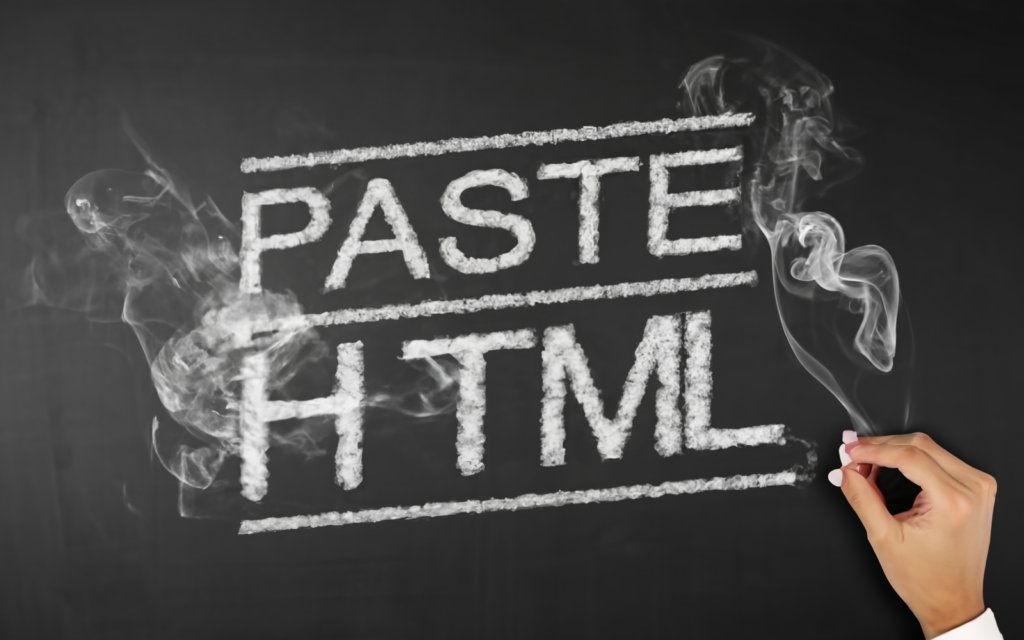
Pasting HTML in Emails
Email may seem outdated, but it remains one of the most effective marketing and communication channels.
However, plain text emails look boring and limit formatting options.
This is where HTML emails come in – allowing you to create nicely formatted messages with:
- Colors, fonts, and other styling
- Images
- Clickable buttons
- Sections and columns
- And more!
But coding HTML email templates from scratch is complex and error-prone.
A quicker way is to paste HTML content directly into email clients like Outlook and Gmail.
Let’s see how it works.
Embed HTML in Outlook emails
Microsoft Outlook desktop allows sending HTML emails via copy-paste.
Here are the steps:
- Draft your HTML email content
For example:
<table width="100%" border="0" cellpadding="0" cellspacing="0">
<tr>
<td>
<h2>Hello World!</h2>
<p>This is an <b>HTML</b> email.</p>
</td>
</tr>
</table>This creates a nice formatted message with header, paragraph, and bold text.
- Copy this HTML
- Paste into a new Outlook email
- Select the pasted content
- Click the “HTML” button in the formatting toolbar
This converts the pasted HTML into a rich email template.
- Customize the HTML further if needed
- Send your message!
The email will retain colors, fonts, images, and any formatting when received by the recipient.
📝 Note: Outlook.com webmail does not support direct HTML pasting like the Outlook desktop app.
With this approach, you can quickly send one-off messages, announcements, invitations, and newsletters with HTML formatting rather than just boring plain text.
Embed HTML in Gmail messages
Gmail also allows pasting HTML content directly into the compose window.
The process is similar:
- Write your HTML email template
Such as:
```html
Greetings!
This is a Gmail HTML email.
```- Copy the HTML
- Paste into a new Gmail message
- Avoid using
<img>image tags – Gmail blocks images for security. - Customize if needed
- Send it off!
The formatted HTML email will be received looking nice and polished.
Gmail does sanitize certain HTML tags and CSS for safety. But pasting HTML content remains an easy way to quickly send HTML emails through Gmail.
⚠️ Warning: Gmail may interpret your HTML in unpredictable ways or block certain CSS. Test thoroughly before sending bulk emails!
Best practices for HTML emails
When pasting HTML content into emails, keep these best practices in mind:
- Simpler is better – Avoid complex HTML and CSS. Email clients render inconsistently.
- Tables for layout – Use HTML tables rather than divs for layouts. Tables are most reliably supported.
- Inline CSS – Use inline styles rather than CSS classes and external stylesheets.
- Test on clients – Rendering varies across Outlook, Gmail, Apple Mail, etc. Test on all major ones.
- Mobile friendly – Ensure your HTML email templates reflow cleanly on small screens to prevent horizontal scrolling.
- Proofread – Carefully check your message for any errors or typos before sending.
- Link checking – Click all links to validate they work correctly after pasting HTML.
- Preview text – Define a text preview version as fallback for non-HTML email clients.
- Image hosting – Rather than linking images directly, embed them or host externally to allow access.
- Spam checks – Review your emails with spam check tools to avoid landing in spam folders.
- Authentication – Properly authenticate your domain’s sending IPs to bypass spam filters.
Services for HTML Emails
Rather than pasting HTML emails manually, consider using services that generate and send HTML email campaigns.
Here are some top options:
- Mailchimp – All-in-one email marketing platform.
- Sendinblue – Affordable for small business email marketing.
- MailerLite – Easy email builder and sender.
- Constant Contact – Built-in email campaign creation tools.
- SendGrid – Transactional and marketing email delivery.
- Mailjet – For large volume email sending.
These take care of hosting images, link tracking, analytics, subscriptions, and more.
But for one-off transactional emails, direct HTML pasting into Outlook and Gmail works well enough!
In nutshell
Here are some key points to remember:
- Use HTML to create nicely formatted and branded emails
- Quickly embed HTML emails by pasting directly into Outlook and Gmail
- Follow best practices for clean rendering across email clients
- Consider email marketing services for large campaigns
Take advantage of copy-paste for rapidly sending HTML emails on the fly or as part of professional email campaigns.
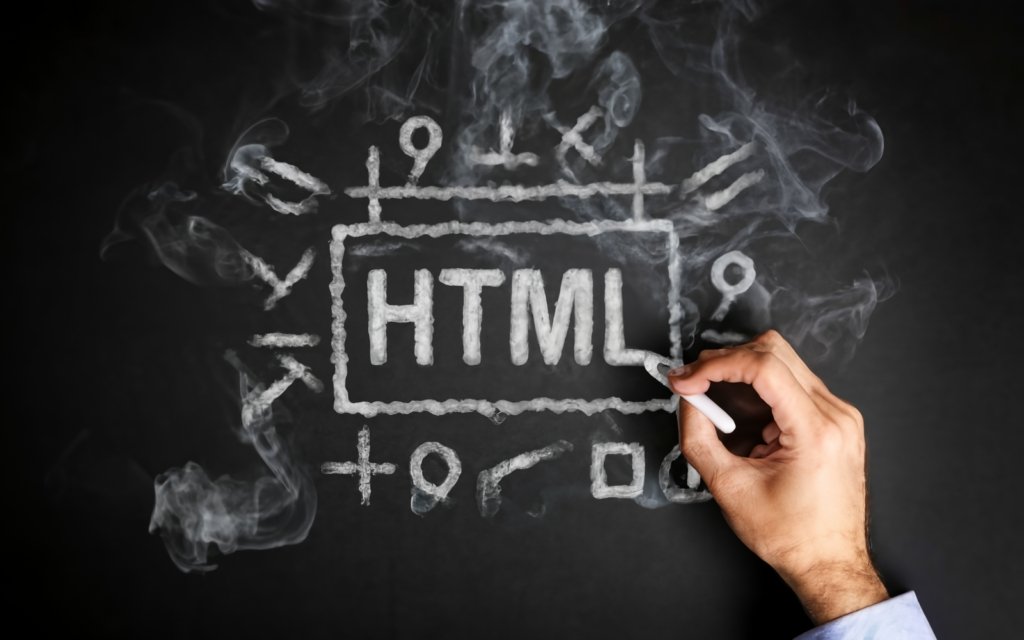
Converting Documents to HTML
Creating HTML content from scratch can be slow and tedious. An easier way is to repurpose existing documents like Word, Google Docs, Excel, and PDFs by copy-pasting into HTML.
This leverages converter tools to transform pasted content into clean semantic HTML, saving enormous amounts of coding time.
Let’s see how to easily recycle your docs into HTML format.
Paste from Microsoft Word to HTML
Microsoft Word is a ubiquitous document creation tool, with billions of documents created in .DOC and .DOCX formats.
These Word documents support text formatting like:
- Headings – Styled with Word’s builtin heading styles.
- Lists – Bulleted and numbered lists.
- Bold / italic – Formatted text as bold or italicized.
- Images – JPG, PNG or other image types.
- Tables – Data presented in table structure.
- Links – Hyperlinked text and URLs.
- Other styling – Colors, font sizes, etc.
To properly convert all this into HTML format requires coding things like:
<h1>Heading 1</h1>
<ul>
<li>Bulleted list item</li>
</ul>
<strong>Bold text</strong>
<img src="image.png">
<table>
<tr>
<td>Table data</td>
</tr>
</table>
<a href="https://example.com">Link text</a>Manually writing HTML for headings, formatting, tables, etc is super tedious!
Instead, you can simply copy-paste the entire Word document into an online HTML editor.
The editor automatically handles:
- Transforming Word headings into proper
<h1>,<h2>, etc tags. - Converting Word tables into HTML
<table>markup. - Changing bold/italic styling into
<strong>and<em>semantic tags. - Embedding any images into
<img>image tags. - Creating HTML lists from Word bullet and numbered lists.
- Linking URLs into anchor
<a>links.
This cleanly extracts the content from Word formatting into semantic HTML tags.
💡 Pro Tip: First paste the Word doc into a plain text editor, then copy-paste that plain text version into the HTML editor for best results.
Being able to quickly recycle Word documents into formatted HTML can save enormous amounts of manual coding time.
The same approach works great for converting the open-source .ODT documents created by LibreOffice or OpenOffice into HTML as well.
Paste from Google Docs to HTML
Google Docs is another popular document creation tool, using simple WYSIWYG formatting options.
To transform Google Docs into HTML, the process is practically identical:
- Copy all content from your Google Doc
- Paste into an online HTML editor
- The editor converts the pasted text into HTML tags like:
- Headings become
<h1>, <h2>, etc - Bold into
<strong>, italic to<em> - Lists to HTML
<ul>, <ol>, <li>tags - Tables into HTML table markup
- Images into
<img>tags - Links into anchor tags
<a>
- Copy over the converted HTML code into your web project
Since Google Docs uses simple formatting options translatable to HTML, pasting into editors works great.
📝 Note: With Google Docs, no intermediate plain text paste step is needed. Paste directly from Google Docs to HTML editor.
This copy-paste approach makes repurposing your existing Google documents into HTML web content fast and simple.
Paste from Excel spreadsheets to HTML
Excel spreadsheets can contain valuable tabular data you may want to integrate into your webpages.
Manually coding Excel data as an HTML table is incredibly tedious:
```html
<table>
<tr>
<td>Row 1 Column 1</td>
<td>Row 1 Column 2</td>
</tr>
<tr>
<td>Row 2 Column 1</td>
<td>Row 2 Column 2</td>
</tr>
</table>
```Rather than typing all those table tags, you can copy Excel cell ranges and paste directly into an HTML converter.
This will instantly transform the Excel data into a fully formatted HTML table, complete with:
<table>tag<tr>table rows<td>table data cells- Styling like grid lines
For example, pasting this Excel data:
| Name | Age |
| – | – |
| Alice | 25 |
| Bob | 30 |
Produces this HTML:
```html
<table>
<tr>
<td>Name</td>
<td>Age</td>
</tr>
<tr>
<td>Alice</td>
<td>25</td>
</tr>
<tr>
<td>Bob</td>
<td>30</td>
</tr>
</table>
```Converting Excel data into HTML tables by copy-pasting can save huge amounts of coding time and effort.
Paste from PDF files to HTML
PDF documents are great for portable document sharing. But their content is locked down and inaccessible for web use.
Copying text from PDF files into an online PDF to HTML converter makes transforming PDF data into HTML easy.
For example, consider a PDF containing:
- Title
- Headings
- Lists
- Images
- Tables
- Formatting like bold and italic
Pasting this PDF into a converter tool extracts all the text and:
- Converts any PDF headings into HTML heading tags
- Changes lists into HTML list markup
- Embeds images using
<img>tags - Builds tables with
<table>HTML structure - Handles formatting like bold (
<strong>) and italic (<em>)
This saves tons of time vs manually deciphering PDF content to write equivalent HTML.
📝 Note: Converting from scanned PDFs works less reliably than text-based PDFs. AI OCR helps for scanned docs.
In summary, leveraging PDF to HTML converters with copy-paste lets you salvage and reuse PDF content easily.
In short
- Manually coding content from Word, Google Docs, Excel, PDFs into HTML is tedious and slow.
- Simply copy-pasting documents into online converters automates transformation into HTML.
- This reusable approach saves enormous amounts of coding time and effort.
- Output is clean semantic HTML ready for web use.
Rather than manually typing HTML, let the tools do the grunt work for you by pasting.

Cleaning Up Messy HTML
When working with HTML, you’ll inevitably have to deal with messy, broken, or inefficient code that needs fixing.
Manually cleaning up bad HTML is a tedious chore.
Luckily there are handy tools to automate tidying up markup using the power of copy and paste.
Let’s explore some options for wrangling messy HTML into shape.
Fix invalid HTML automatically
HTML elements have specific rules. For example:
- Tags must be properly nested e.g. no stray
<strong>without</strong> - Attributes require values e.g.
<img src=" "> - Certain tags are reserved for specific purposes
Code with errors like missing tags, improper nesting, or invalid markup is considered malformed HTML.
Browsers do their best to render broken HTML. But invalid code can cause unintended issues.
You could carefully audit and hand-edit incorrect HTML. But an easier way is to paste the imperfect HTML into an HTML validator and formatter.
This automatically:
- Finds and fixes missing or unbalanced tags
- Adds missing attribute values
- Removes illegal/deprecated tags and attributes
- Standardizes tag and attribute names
For example, pasting in HTML like:
```html
<b>Bold text
<i>Italic text</B>
<img src="image.png>
<table width=50%>
<tr>
<td>Table data
</tr>
</table>
```
```html
<strong>Bold text</strong>
<em>Italic text</em>
<img src="image.png" />
<table width="50%">
<tr>
<td>Table data</td>
</tr>
</table>
```
This ensures standards-compliant valid HTML and avoids any weirdness from malformed markup.
💡 Pro Tip: Enable HTML Tidy options like
numeric-entitiesanddrop-proprietary-attributesfor additional cleanup.
Letting tools automatically fix and validate your HTML saves tons of manual auditing and tweaking.
Use online HTML editors to clean code
Online visual HTML editors like CKEditor are another great way to clean up messy code.
The process is:
- Paste your “dirty” HTML into the editor’s source code view
- Switch to visual editing mode
The editor automatically:
- Fixes and completes unbalanced or missing tags
- Removes unwanted markup
- Applies HTML best practices
This ensures the HTML renders properly in visual mode.
- Tidy up the HTML further in visual mode if needed
- Finally, grab the clean markup from source code mode for use
Think of the editor as an auto-fixer plus visual playground for manually tweaking your HTML.
🧹 Pro Tip: Try multiple editors like CKEditor, Quill, TinyMCE as each has slightly different cleanup behaviors.
Leveraging online visual editors’ built-in validation and correction can speed up manually formatting sloppy HTML.
Beautify HTML with code formatting
Hard-to-read code hampers understanding and maintenance. Beautifying HTML applies consistent indentation and whitespace for enhanced human readability.
Rather than manually formatting markup, pasting HTML into an online HTML beautifier quickly:
- Indents nested tags
- Applies line breaks and spacing
- Condenses extra newlines
Transforming HTML like:
“`html
Paragraph text
“`
Into properly indented code:
```html
<div>
<div>
<p>
Paragraph text
</p>
</div>
</div>
```Proper nesting and whitespace makes it much easier to visually parse and work with HTML.
🖋 Pro Tip: For expanded formatting options, set HTML beautifier configuration settings like indentation size.
Beautified HTML aids in collaboration, debugging, and maintainability – worth the quick paste step.
Minify HTML to optimize code
On the flip side of beautifying, minification compacts HTML by:
- Removing all unnecessary whitespace
- Eliminating comments
- Shortening class/ID names
This produces the absolutely smallest HTML payload possible for faster page loading.
Rather than manually removing newlines and reformatting markup, pasting HTML into an online minifier quickly performs:
- Collapsing all whitespace
- Stripping comments
- Compressing tag and attribute names
Transforming:
```html
<div>
<div>
<p>
Paragraph text
</p>
</div>
</div>
```
```html
<div><div><p>Paragraph text</p></div></div>
```
The resulting compressed HTML loads faster by reducing file size.
🚀 Pro Tip: For extra performance gains enable removal of unneeded tags or attributes in minifier settings.
Leveraging online minification is an easy optimization to slim down bulky HTML.
In nutshell
Fixing HTML manually is annoying. Automate improvements by pasting into:
- Validators – Auto-correct invalid markup
- Editors – Fix and visually tweak HTML
- Beautifiers – Format for readability
- Minifiers – Compress for performance
Clean, compliant, readable HTML should be the end goal of any paste-driven HTML cleanup workflow.
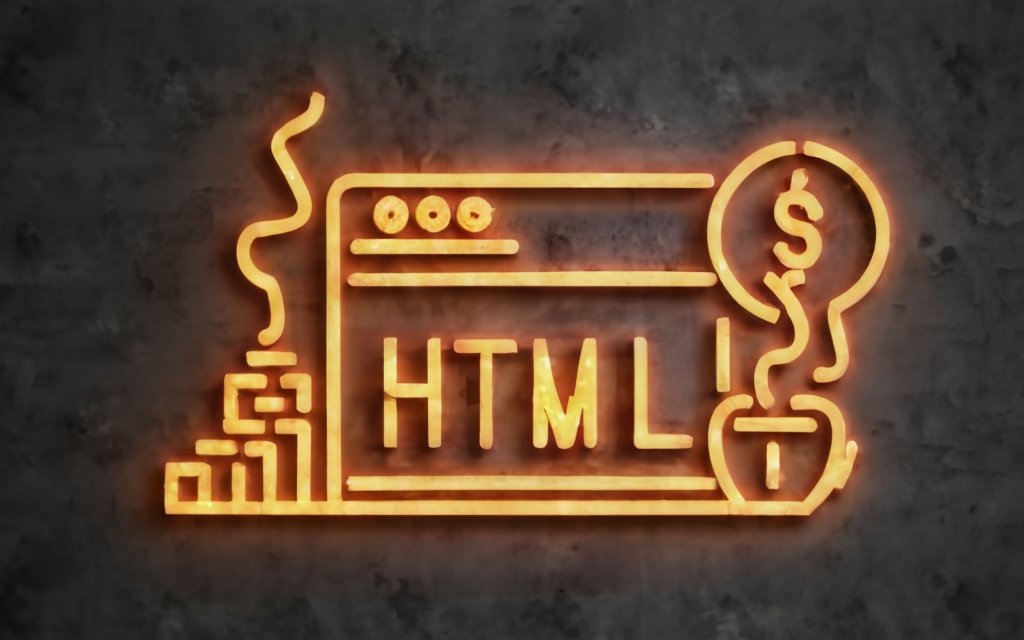
Editing HTML
Once you’ve got HTML content, you’ll likely need to edit it – updating text, tweaking formatting, replacing images, etc.
Manually finding and changing HTML tags is slow and error prone.
Luckily there are excellent tools to speed up editing using search-and-replace and templates.
Let’s dive into efficient ways to modify HTML using copy-paste techniques.
Edit HTML visually with WYSIWYG editors
Visually editing HTML with What-You-See-Is-What-You-Get (WYSIWYG) online editors provides the easiest editing experience.
Popular options like CKEditor allow quick visual tweaking of HTML content by:
- Pasting HTML into the editor
- Editing visually – Changing text, applying formatting like bold or lists, swapping images – all using toolbar buttons
- Finally, copying the modified HTML from source view for use
This avoids tediously editing raw <strong>, <img>, and other tags.
🖌️ Pro Tip: Enable editor options like “Paste as plain text” and “Clean up HTML on paste” for best reformatting of pasted content.
For substantial edits, WYSIWYG offers a fast direct manipulation editing workflow.
Modify HTML directly in code view
For more precise changes to HTML, source code editing gives you direct access to modify markup.
Steps are:
- Paste in HTML
- Switch to code view to expose the raw tags
- Make edits:
- Change text inside elements
- Add/remove formatting tags like
<strong> - Swap image sources
- Modify attributes like CSS styles
- Copy out the revised HTML
This code-level control is great for tweaks not easily done visually such as:
- Changing single letters without selecting all
- Testing different tag options and attributes
- Deleting multiple random lines
Think of source editing as “power user” access to fine tune markup.
⚙️ Pro Tip: Use editor features like multiple cursors and find-replace to speed up bulk find-replace operations.
For nitty-gritty HTML manipulation, code editing can be more direct than visual tools.
Find and replace text in HTML docs
To make widespread formatting changes across an HTML document, find and replace editing is a must-have tool.
Rather than manually browsing and tweaking HTML, pasting content into an editor with robust find-replace like CKEditor enables:
- Multi-file search and replace
- Global find-replace across open docs
- Regex-powered pattern finding
- Case-sensitive toggling
- Incremental find-highlight
- And more
This lets you quickly make changes like:
- Changing all H2 headers to H3s
- Fixing typos and broken links
- Updating old image URLs
- Switching to new CSS class names
- Removing deprecated tags/attributes
For HTML updates across multiple pages or sites, automated find-replace can save huge amounts of tedious manual editing.
Use templates to quickly customize HTML
Rather than completely coding HTML pages from scratch, start with templates containing pre-built reusable snippets and layouts.
Pasting HTML templates into online site builders, your own codebase, or HTML editors gives you:
- Premade navigation menus – Just set the links.
- Good page structure – Header, body, footer areas.
- Styled elements – Buttons, tables, etc with CSS.
- Formatted text – Headings, paragraphs, lists.
- Placeholders – Preset spots for injecting content.
This allows quickly trying different HTML/CSS starting points and dropping in your custom content.
Swap or delete any unnecessary sections vs deleting everything and starting totally fresh.
🏗️ Pro Tip: Maintain your own snippet library of reusable HTML chunks and components for easy reuse across projects.
Rather than slavishly recoding identical structures repeatedly, repurpose templates via copy-paste to get a head start.
In short
- Editing HTML visually is fast for one-off tweaks
- Code editing gives precise low-level control
- Find-replace enables powerful multi-file search operations
- Templates provide pre-built starting points to customize
Combine these techniques to enhance your HTML editing efficiency.

Previewing and Testing HTML
Before publishing HTML pages, you’ll want to thoroughly preview and test that everything looks and functions as expected.
Rather than manually clicking through sites, leveraging online tools to preview, troubleshoot, and share HTML for feedback can accelerate development.
Let’s go through some browser-based techniques to preview HTML created via copy-paste.
Check rendered HTML on desktop and mobile
To validate how HTML will look to users, previewing the rendered output across devices is crucial.
Rather than manually opening HTML files locally, online previewers provide a quick way to check responsive rendering.
After pasting HTML into an editor, click the preview icon to:
- Check desktop display by default
- Toggle to tablet and mobile views
- Refresh and interact with live content
- Identify styling or layout issues
For example, you can preview HTML email templates to ensure they render nicely on mobile without horizontal scrolling or other problems.
Previewers provide an easy way to instantly view HTML, ideally prior to publishing publicly.
📱 Pro Tip: For local HTML, use self-contained preview apps like Web Server for Chrome to test offline.
Quick HTML previews can catch rendering quirks across platforms before they impact real users.
Validate HTML to catch errors
Before previewing HTML, running code through validators helps catch errors like:
- Malformed markup
- Invalid nesting
- Bad attributes
- Deprecated tags and attributes
Rather than hand-auditing code, pasting HTML into an online validator checks:
- All tags properly open and close
- Nesting and indentation follows rules
- Named tags and attributes are allowed
This outputs helpful warnings like:
Line 15, Column 7: Stray end tag "strong".
✖ Error: Bad value X-UA-Compatible for attribute http-equiv on element meta.
✖ Warning: The type attribute is unnecessary for JavaScript resources.Fixing flagged issues ensures compliant semantic HTML versus weird rendering quirks.
🐞Pro Tip: For expanded validation enable options like “Show Source” to see original source lines.
Taking the extra validation step before previewing can prevent obvious HTML defects.
Share HTML for collaboration
Development teams can preview and provide feedback more easily when HTML code is accessible online.
Rather than emailing ZIP files or shared drives, pasting HTML into cloud-hosted collaboration platforms like Codeshare.io enables:
- Live rendered preview
- Discussing directly in the editor
- Annotating regions of interest
- Suggesting improvements
- Tracking revisions
This allows stakeholders and team members to quickly interact with HTML pages before public launch.
👥 Pro Tip: For reviewing HTML emails specifically, paste into tools like Litmus to collect feedback across email clients.
Sharing access to HTML for preview and comment streamlines gathering early input without locally distributing files.
Download HTML for use anywhere
Once HTML code is finalized, downloading a local copy allows publishing it anywhere required.
Rather than copy-pasting HTML repeatedly, editors have export options to save code as:
- Raw
.htmlfiles - Zipped
.zipbundles with images/assets .docxWord documents- Print-ready
.pdffiles - Installable
.exepackages - And more
This provides a local permanent instance of the HTML for uploading to:
- Static site generators
- Web servers
- CRM platforms
- App frameworks
- Content management systems
- Documentation platforms
- Any other destination
💾 Pro Tip: When exporting HTML with images, download resources as a zipped bundle for ease of transfer without broken images.
Downloading finalized HTML allows seamlessly integrating it across various systems as needed.
In short
Leverage online tools to:
- Quickly preview HTML on multiple devices
- Validate code to prevent rendering issues
- Share for collaborative feedback
- Export HTML copies for integration
This streamlines testing and prepping HTML for launch after copy-pasting and editing.
Pasting HTML Securely
The open nature of the web makes pasting HTML from unknown sources potentially risky. Bad actors can exploit vulnerabilities using malicious HTML.
Let’s review smart practices to safely leverage online paste tools without introducing security holes.
Avoid XSS vulnerabilities from pasted code
Cross-site scripting (XSS) attacks remain one of the most common hacking methods. They inject malicious JavaScript into sites to access user data or spread malware.
Pasting uncontrolled HTML into web apps provides an easy XSS vector. For example:
<img src="#" onerror="stealPasswords()">This harmless looking <img> tag actually executes harmful JS when the image “errors”.
To mitigate XSS when pasting HTML:
- Never insert untrusted code without sanitization – including content from users.
- Validate paste input – Remove dangerous tags like
<script>, strip JS events likeonclick, etc. - Escape on output – Encode special characters like
< >when redisplaying pasted HTML. - Content Security Policy – Whitelist allowed domains for content like images.
- CSP Nonce – Require one-time nonce tokens to execute pasted scripts.
- Access control – Limit what internal APIs pasted code can access.
- Sandboxing – Execute pasted HTML in isolated environments.
- Minimize JS – Use frameworks like React or Svelte that avoid innerHTML.
The key is intelligently handling untrusted HTML before blindly inserting it.
😱 Pro Tip: Never ever eval() or new Function() pasted code – that grants full arbitrary JS execution!
With proper precautions, pasting HTML can be made safe from XSS risks.
Sanitize untrusted HTML before insertion
If allowing users to paste custom HTML like comments or generated content, always sanitize it server-side first using a library like DOMPurify.
This will:
- Only allow whitelisted tags/attributes
- Strip out disallowed HTML like
<style>or<script> - Remove unsafe URL protocols like
javascript: - Disable unsafe event handlers like
onclick
So malicious HTML like:
<script>deleteAllData()</script>
<a href="javascript:sendPassword()">Click me</a>
Gets sanitized down to safe content like:
```html
<p>Click me</p>
``Use online tools safely
When pasting into online editors or validators, take care not to expose sensitive data.
- Avoid pasting internal code or credentials.
- Check tools are reputable with good security practices.
- Confirm tools are not secretly logging your pastes.
- Use local tools if dealing with highly confidential contents.
Also beware of scraped/stolen content:
- Don’t blindly copy and reuse others’ HTML without permission.
- Be careful reusing open source code lacking licenses.
- Double check public dribbble/GitHub snippets are licence free.
- Give proper attribution if repurposing others’ HTML.
The web makes sharing and discovery easy. But ethically paste and credit sources.Next Steps for Pasting HTML like a Pro
That wraps up our guide to smarter HTML workflows using copy-paste techniques!
Here are some next steps to cement these skills:
- Set up premade HTML snippets – Save common snippets for easy reuse.
- Build a boilerplate template repository – For kickstarting projects faster.
- Establish a structured editing workflow – Clean, validate, preview, export, etc.
- Integrate tools into your IDE – Online editors, linters, validators, etc.
- Learn keyboard shortcuts – Boost efficiency for frequent commands.
- Write HTML templates for common needs – Emails, landing pages, data tables, etc.
- Study the source – Viewing others’ quality HTML source helps learning.
- Stay secure – Smart habits around sanitizing user-generated HTML.
- Stay updated – Follow HTML specifications and evolving best practices.
The journey to HTML mastery never ends. But leveling up your paste-driven workflows helps reach greater HTML productivity, quality and security.
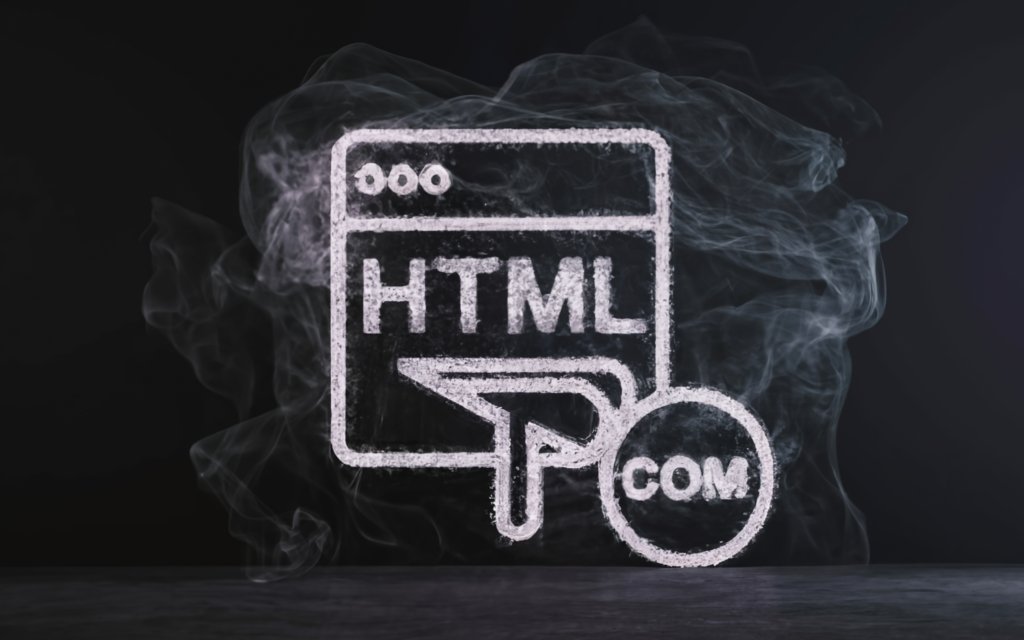
Key Takeaways
Let’s recap some of the top high-level points on boosting productivity with HTML using copy-paste techniques:
- Pasting speeds development – Rapidly insert code snippets vs manually typing.
- Convert docs to HTML -Transform Word, Google Docs, PDFs, etc into web-ready HTML.
- Clean up HTML easily – Fix, beautify, and minify HTML with online tools.
- Edit visually and in code – WYSIWYG editors and find-replace provide editing power.
- Preview and validate – Catch issues before launch with online testing.
- Collaborate securely – Enable team feedback and safely sanitize pastes.
- Compose HTML emails – Quickly embed HTML templates into email clients.
- Populate knowledge bases – Convert documents into nice-looking articles.
- Leverage templates – Recycle proven HTML designs vs coding from scratch.
- Learn from examples – Viewing others’ quality source provides ideas and patterns.
The strategic use of copy-paste makes working with HTML much smoother. Take advantage of the many available tools to eliminate grunt work and focus on creation.
With practice, HTML workflows become second nature. But always focus on quality, semantic, validated code vs blindly reusing without understanding.
By mastering paste techniques, developers can reach new levels of HTML efficiency while still producing standards-compliant markup. Work smarter, not harder!
Frequently Asked Questions
Let’s review answers to some common questions around copying and pasting HTML.
Why paste HTML rather than code manually?
Manually coding repetitive HTML markup like menus, buttons, formatting etc is incredibly time consuming. Pasting reusable snippets and content blocks saves huge amounts of development time.
Is copy-pasted HTML clean and valid?
It depends on the source. HTML pasted from tools like Word may require additional cleanup. Validating all pasted code ensures it conforms to HTML standards.
What’s the best way to paste HTML into emails?
For one-off transactional emails, paste directly into Outlook desktop or Gmail compose windows. For bulk email campaigns, use dedicated email marketing tools.
How can I convert PDFs to HTML?
Upload the PDF into an online PDF to HTML converter tool. This will extract the text and attempt to transform into equivalent HTML automatically.
What’s better – visual or code editing?
Visual WYSIWYG editing makes simple formatting tweaks easy. But code editing gives more precise control for complex changes and fine tuning. Use both!
Is it safe to paste HTML into online tools?
Generally, but avoid exposing confidential data. Review site terms and privacy policies. For sensitive data, use locally installed validators and editors.
How can I sanitize untrusted HTML?
Use a library like DOMPurify to filter out disallowed tags, strip JavaScript, and only permit safe attributes before inserting any user-generated HTML.
What are some good HTML code examples for learning?
Viewing source on well coded sites like HTML5Up, Bootstrap themes, and CodePen examples provides good quality HTML patterns to learn from.
Should I minify HTML before pasting into sites?
No, minification makes code harder to read and edit. Minify as a final step right before launch for performance optimization. Keep human-readable HTML while developing.

